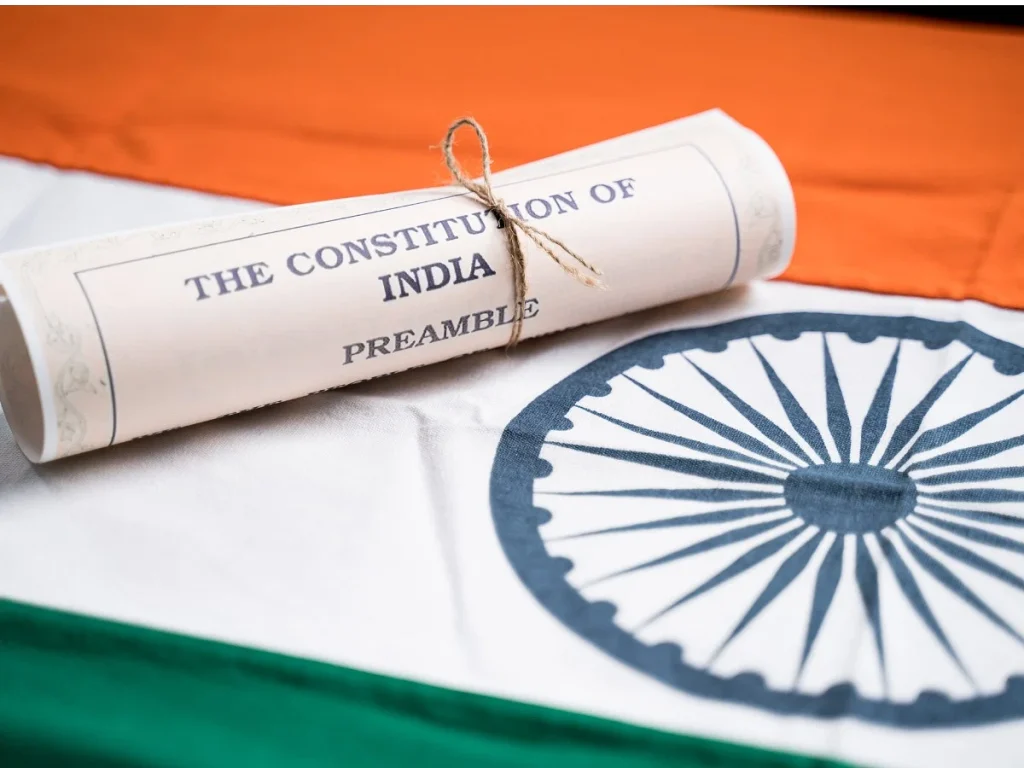“The Constitution is not a mere lawyer’s document; it is a vehicle of life, and its spirit is always the spirit of age.” – Dr BR Ambedkar
- On November 26, India is celebrating the 75th Constitution Day, or Samvidhan Divas, to honor the country’s democratic, secular, and independent identity.
- Constitution Day is observed every year in India to mark the adoption of the Indian Constitution by the Constituent Assembly on November 26, 1949.
- The Constitution came into force on January 26, 1950, which is celebrated as Republic Day.
- The Ministry of Social Justice and Empowerment on 19th November 2015 notified the decision of Government of India to celebrate the 26th day of November every year as ‘Constitution Day’ to promote Constitution values among citizens.
Constitution Day of India 2024: Significance
- Indian Constitution Day promotes awareness of constitutional ideals, rights, and commitments, emphasizing justice, liberty, equality, brotherhood, and national unity.
- This day reflects India’s journey, reaffirming its commitment to democratic ideals, and honors the Constituent Assembly’s role in founding a sovereign, socialist, secular, and democratic republic.
- Constitution Day encourages civic participation and reinforces India’s commitment to a progressive, inclusive, and equitable society.
History of the Indian Constitution
- The Government of India Act, 1935 served as a foundation for India’s governance but lacked provisions for a sovereign democratic republic.
- The Constitution of India was framed by a Constituent Assembly set up under the Cabinet Mission Plan of 1946.
- The Assembly held its first meeting on December 9, 1946, and elected Dr. Sachhidanand Sinha, the oldest member of the Assembly as the Provisional President.
- On December 11, 1946, the Assembly elected Dr Rajendra Prasad as its permanent Chairman.
- The Constituent Assembly set up 13 committees for framing the constitution including a Drafting Committee under the Chairmanship of Dr. B.R. Ambedkar.
- On the basis of the reports of these committees, a draft of the Constitution was prepared by a seven-member Drafting Committee. Seven members were
- Dr. B.R. Ambedkar (Chairman)
- N. Gopalaswsami Ayyangar
- Alladi Krishnaswamy Ayyar
- Dr. K.M. Munshi
- Syed Mohammad Saadullah
- N. Madhava Rau (He replaced B.L. Mitter)
- T.T. Krishnamachari (He replaced D.P. Khaitan)
- The drafting committee took less than six months to prepare its draft. In all it sat only for 141 days.
- It is the longest written Constitution in the world containing 395 Articles, 8 Schedules and a Preamble, now at present it has 448 Articles and 12 Schedules.
Major Committees of the Constituent Assembly
- Union Powers Committee: J. Nehru
- Union Constitution Committee: J. Nehru
- Provincial Constitution Committee: Sardar Patel
- Drafting Committee: B.R Ambedkar
- Fundamental Rights sub-committee: J.B Kripalani
- Rules of Procedure Committee: Dr. Rajendra Prasad
- States Committee (Committee for negotiating with States): J.L. Nehru
- Steering Committee: Dr. Rajendra Prasad
Important facts
- The Constitution of India was not typeset or printed but was handwritten and calligraphic in both English and Hindi.
- It was entirely handcrafted by the artists of Shantiniketan under the guidance of Acharya Nandalal Bose, with the calligraphy texts done by Prem Behari Narain Raizada in Delhi.
- Elephant was adopted as the symbol of the Constituent Assembly.
- Beohar Rammanohar Sinha illuminated, beautified and ornamented the original preamble calligraphed by prem Behari Narain Raizada.
- The calligraphy of the Hindi version of the original Constitution was done by Vasant Krishan Vaidya.
Important Amendments:
- First Amendment Act, 1951
- The inclusion of the Ninth Schedule to shield land reform and other laws listed in it from judicial review.
- Empowerment of the state to make special provisions for the advancement of socially and economically backward classes.
- Insertion of 31A and 31 B.
- 7th Amendment Act, 1956
- Abolition of the existing classification of states into four categories i.e., Part A, Part B, Part C and Part D state, and reorganised them into 14 states and 6 union territories.
- 24th Amendment Act, 1971
- Affirmation of the power of Parliament to amend any part of the Constitution including fundamental rights.
- It was made compulsory for the president to give his assent to a Constitutional Amendment Bill.
- 42nd Amendment Act, 1976 (Also called as a mini constitution)
- Three new words were added in the 42nd Amendment Act i.e., socialist, secular and integrity, which were added in the Preamble.
- Fundamental Duties were added by the citizens (new Part IV A).
- Added three new Directive Principles of state policy viz., equal justice and free legal aid, participation of workers in the management of industries and protection of the environment, forests and wildlife.
- Facilitation the proclamation of national emergency in a part of the territory of India.
- Constitutional amendments were made beyond judicial scrutiny.
- 44th Amendment Act, 1978
- In the 44th Amendment Act, some of the powers of the Supreme Court and high courts were restored.
- Replacement of the term “internal disturbance” with “armed rebellion” in respect of national emergency.
- Made the President declare a national emergency only on the written recommendation of the cabinet.
Latest Amendments
- 103rd Amendment Act, 2019
- Empowered the state to make any special provision for the advancement of any economically weaker sections (EWS) of citizens.
- 104th Amendment Act, 2020
- Removal of the reserved seats for the Anglo-Indian community in the Lok Sabha and state assemblies.
- 105th Amendment Act, 2021
- Restore states’ power to identify OBCs
- 106th Amendment Act, 2023
- It is also known as the Women Reservation Act, 2023 (Nari Shakti Vandan Adhiniyam), aiming to reserve 33% of seats in the Lok Sabha and state legislative assemblies for women.

